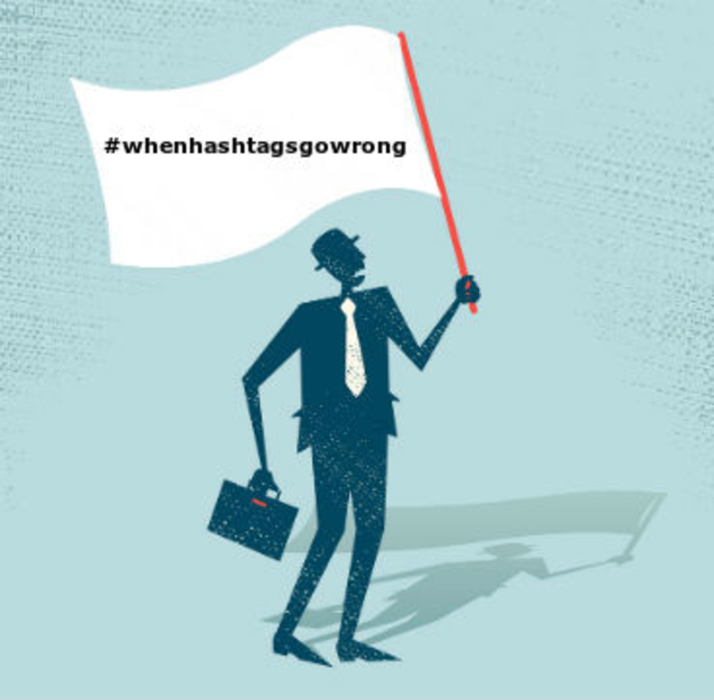Tomorrow at 1pm ET $JPM Vice Chairman Jimmy Lee takes over @JPMorgan to answer your questions for 1 hour. Tweet your Q early using #AskJPM
— J.P. Morgan (@jpmorgan) November 13, 2013
It was just supposed to be a nice little Twitter chat, but when a colossal bank whose name has become almost synonymous with the financial crisis creates a hashtag as open-ended as #AskJPM and just tosses it out there with a goofy smile on its face, it’s hard to expect anything other than a sh#tstorm.
This happened not because JPMorgan is too big to tweet—but because the bank didn’t do any planning and because it seemingly checked its self-awareness at the door.
It’s easy to see what the JPM execs were going for. Social media means engagement, engagement is good—let’s get people talking about JPMorgan. And considering how the whole thing turned out, that’s probably as far as the planning discussion went.
JPMorgan began soliciting questions the day before the chat was scheduled, presumably to grease the conversation wheels, although, clearly, no grease proved necessary. JPM ultimately aborted the Q&A less than 24 hours before it was slated to begin. And no wonder. There are literally thousands of negative tweets tagged #AskJPM. Reading them, I can feel the hot prickle of sweat and semi-nausea that probably washed over whoever was managing the @jpmorgan handle when he or she read some of these gems:
When you collapsed the global economy did it interfere with your vacation in the Hamptons? #AskJPM
— Goodjobguru (@GoodJobGuru) November 14, 2013
Do the top execs have an escape plan in the event of a peasant uprising? #privatejet? #AskJPM @jpmorgan
— Luke Harder (@Anonyphant) November 14, 2013
Every time another person loses their home to an illegal foreclosure, does a bell ring? #AskJPM
— Amy Hunter (@amy10506) November 13, 2013
Even semi-legitimate #AskJPM questions were quickly derailed (although, note the replacement of # with $ symbols in the hashtag):
@EliLanger @jpmorgan after today the answer to your question is Zero. Social media team fired today #AskJPM
— Greg Trevizo (@gregtrevizo) November 14, 2013
Now, seeing all this, some brands might get scared off. Why bother trying something new when you could be setting yourself up for a harrowing, and embarrassing, debacle? No one wants to become the poster child for how not to do something.
But that’s not the right way to think about it, says Brian Martin, SVP of marketing and communications at Project: WorldWide. Martin applauds brands for experimenting. There’s no rule book and everyone’s bound to make some mistakes. The point is to be self-aware and have a tight little game plan in place before firing up the Twitter machine.
I mean, brands and executives plan for press conferences like soldiers equipping themselves for war, mapping out every possible contingency and girding themselves with answers to any conceivable question that might pop up. Social forays really aren’t all that different. In fact, something like Twitter leaves you even more exposed than a traditional press conference.
Having drunk copious amount of its own Kool-Aid, JPMorgan somehow neglected to appreciate the enmity lying in wait for its hapless social venture.
“You run into that a lot; people get so caught up in the company culture that they build up a kind of callous to the company’s vulnerabilities,” Martin says. “That’s why it’s always smart to bring in outside agencies to paint more realistic pictures for you.”
The amorphousness of the #AskJPM hashtag was also problematic. Several years ago, McDonald’s vague #McDStories hashtag suffered a similar fate. A more specific hashtag and a more clear directive regarding the kind of questions JPMorgan was looking to get might have saved #AskJPM from its ignominy.
“Brands need to be more diligent in understanding how someone might take the opportunity to hurt them, especially when we’re talking about big brands,” Martin says. “I think JPMorgan meant well, but it left itself very vulnerable.”
OK, so let’s just say the milk is already spilled. You’re a brand and you messed up big time. What should you do to fix the snafu? People love a comeback kid. If you acknowledge that you made a mistake and deal with it right away, your customers will respect you and, likely, forgive you.
Just look at Salesforce.com and the way it dealt with the controversy over the Dreamforce hackathon, where its $1 million prize for the best team of developers was given to a group that, it was later revealed, had broken the rules. Salesforce CEO Marc Benioff immediately calmed the Twittersphere by saying he would get to the bottom of it. Shortly thereafter he announced that Salesforce would award another $1 million to the second place team.
“It ended up costing Salesforce an extra million, but that’s a drop in the bucket for them—and it’s an especially small amount to eliminate all the snarky responses and bad press,” Martin says. “They did the right thing by acting quickly and decisively.”
JPMorgan’s response, by contrast, was a little tepid.
Tomorrow’s Q&A is cancelled. Bad Idea. Back to the drawing board.
— J.P. Morgan (@jpmorgan) November 14, 2013








